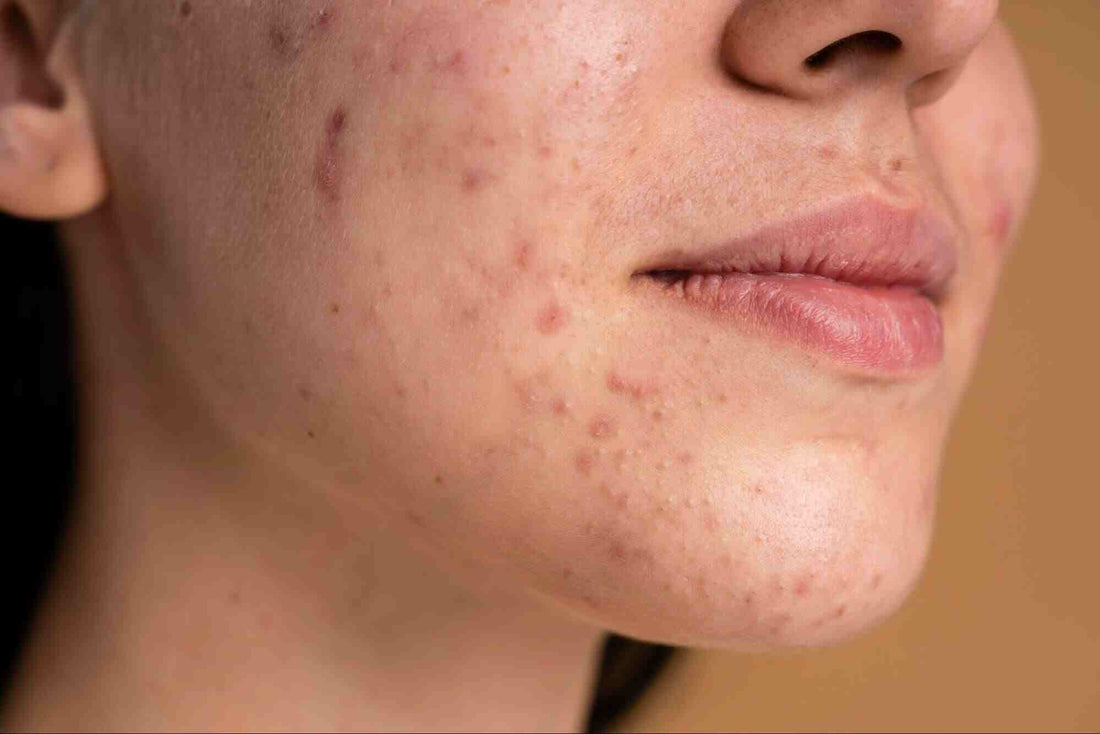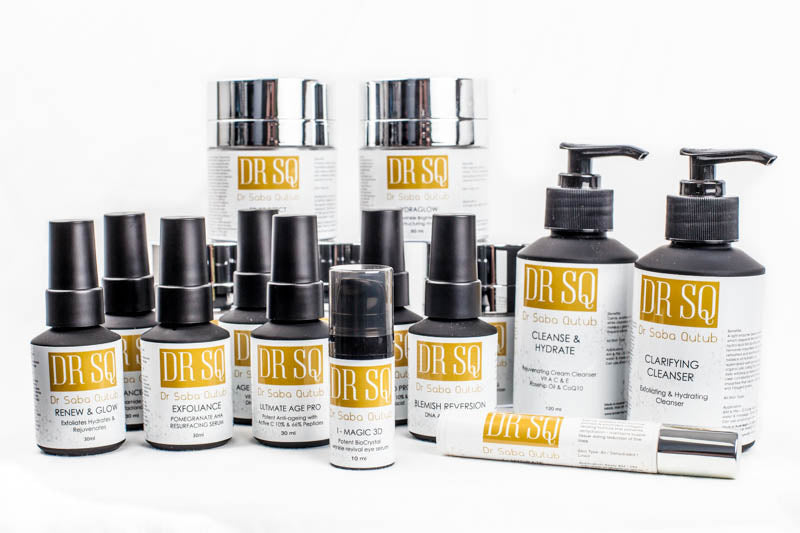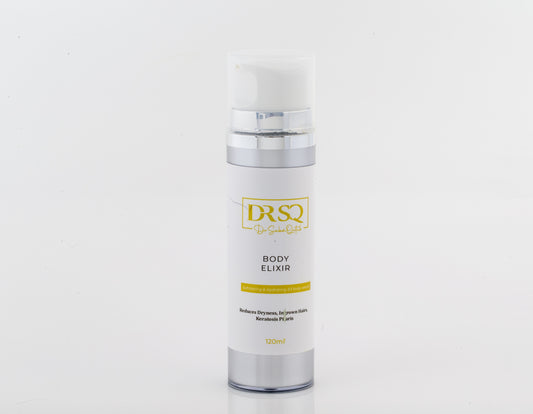Post Acne Hyperpigmentation: Causes & Treatment

According to a study, post-acne hyperpigmentation can occur even in people with mild to moderate acne with less inflammatory conditions. The same study revealed that hyperpigmentation after acne is a frequent and important complication.
Acne spots can fade over time but can remain in some cases too. While managing acne hyperpigmentation can be rigorous and frustrating, it can help in diminishing the acne marks more rapidly if done in the appropriate way.
This blog will explore post acne hyperpigmentation, its causes, and effective management.
What Is Acne Hyperpigmentation?
Acne Hyperpigmentation refers to the dark patch or a dark spot that comes into view after the pimple disappears. It is an area marked by a darker complexion. These areas can be restricted to small regions, or sometimes spread widely.
Skins with darker tones might witness them more commonly while it can happen to anyone regardless of the complexion.
The acne that causes hyperpigmentation differs from other forms. It has a distinct presentation. They appear as patches or the typical dark spots on the skin, and not as raised pimples or inflamed lesions called comedones.
Sometimes, it can manifest on your skin as a freckle. It occurs commonly in populations from Pacific Islanders to African Americans. While native Americans, Hispanics, and Middle Eastern descendants are not been able to escape from it either.

Let’s check out the deep-rooted causes of acne hyperpigmentation!
Click to learn more about acne types and ways to recognise them.
What Causes Acne Hyperpigmentation?
Dark spots may appear followed by acne as a result of melanin, the pigment responsible for giving the skin its colour. Spots tend to appear more when a pimple is gone due to this extra-produced melanin at a particular patch or a spot.
It can be dark brown to lighter in shade.
What causes this increased melanin production? There are multiple factors to blame, including sun exposure (which can expand its appearance on the skin), genetics, medications, or simple hormones. Moreover, various immune and inflammatory factors have caused the surplus production of melanin pigment. Some of the possible factors are:
- Chemokines
- Reactive oxygen species
- Prostanoids
- Cytokines
Several studies have come, but nothing has explained the accurate mechanism behind the overproduction of melanin.
There are hyperpigmentation acne lesions that occur in the dermis layer of the skin and may appear blue-grey with the potential of staying longer than you think.
Acne hyperpigmentation varies in intensity, and dermatologists are uncertain about their exact causes. We need extensive research and studies to determine those underlying causes.
How Does Acne Lead to Hyperpigmentation?
You must have heard your well-wishers asking you not to pop your pimples because of the scarring. But there is no absolute necessity that refraining from bursting or popping a pimple will surely save you from getting that unwanted hyperpigmented area on your skin.
So what is the specific reason behind the phenomena of acne leading to hyperpigmentation?

We can blame the inflammatory repair response of the skin.
Clogged pores get attacked and infected by the bacteria resulting in inflammation. A pimple receives formed. This inflammation increases the production of melanin that further creating persistent marks. These marks can stay and irritate beyond the duration of breakouts.
This is what we call PIH or post-inflammatory inflammation.
Here’s a pro tip: Do not pick your acne.
Acne Hyperpigmentation Treatment
Leaving acne hyperpigmentation is not harmful to your skin, but surely to your self-esteem.

Addressing this skin concern can surely contribute to an improved appearance leading to self-confidence.
Dermatologists hold the belief that early treatment of acne may aid the procedure of acne fading and leave less room for associated marks. The very first step toward treating your acne hyperpigmentation is knowing the cause. After determining the deep-rooted cause, you can contribute a lot to managing your acne.
Some instances of hyperpigmentation acne are deeply entrenched in the dermis and may require extended duration to fade away, or in worst cases, they may choose to stay permanently.
Ensure to understand that fading takes time, and may take up to a year. It’s not an overnight process.
Navigating tons of home remedies, commercials, and expert recommendations and choosing an effective treatment can be challenging. Consulting your dermatologist is always recommended and is a smart move.
Here are a few avenues to explore:
Home-Based Alternatives
While you want to try treating your acne hyperpigmentation at home, give cosmetic camouflage a hit. You can simply apply a concealer or contour the dark spots. This method is short-term yet impactful.
It’s absolutely fine if you don’t want to go through the medical treatment. You need to give careful consideration and attention to detail while selecting any concealer for your skin. Go for the non-comedogenic, non-greasy, and waterproof concealer. Moreover, look for the long-lasting one.
Avoid skincare or make-up products that can give rise to your acne.
Home remedies can offer assistance to acne-prone skin and post-acne-hyperpigmentation, it’s crucial to note that but might take a considerable span to show results. Also, before attempting any home remedy, consulting an expert is a must, or it can even exacerbate your condition.

Sun Protection
Ultraviolet rays pose crucial risks to your skin and may cause some serious detrimental effects. Hyperpigmentation is among them. If your skin is acne-prone or already hyperpigmented, sun exposure can even worsen the condition.
Try limiting your sun exposure duration, and always wear your SPF with a minimum limit of 30 whether it is windy, cloudy, or rainy outside. Donning covered clothes can additionally protect your skin.

Pay more attention to areas prone to sunburn, and reapply after every two hours. Make a wise selection of your sunscreen addressing your acne-prone skin condition and hyperpigmentation.
Take note: Sunscreen should be applied at least 20 minutes before leaving the home.
Prescribed Ingredients
The following ingredients may help in treating your post-acne hyperpigmentation:
- Azelaic Acid
- Kojic Acid
- Hydroquinone
- Retinoic Acid
- Glycolic Acid
According to a research, Retinoic acids have the potential to relieve post-inflammatory hyperpigmentation and acne scars. These ingredients take appropriate inactions for your skin concern, from lighting your dark spots to slowing down the overproduction of melanin.
Recommended Skincare Routine
A consistent and diligent skincare routine may help you to combat acne effectively and associated hyperpigmentation as well. Ensure to adhere to the below-mentioned steps:
Step 1: Cleanse
Start with the facial cleanser. You can opt for the DRSQ’s Clarifying Cleanser. It is detoxifying wash with activated charcoal to deeply cleanse your pores. The effective combination of AHA + BHA and hydrating essential oils thoroughly purifies the dirt and oil without impairing the sensitive barrier of your skin.
Take 2-3 pumps and mix with water to make a lather. Apply evenly and rinse.
Step 2: Apply a Serum
Serums can directly target your acne and halt the progression of hyperpigmentation. Try out DRSQ’s Skin Bright serum. This serum has tetrapeptide 30 to act upon hyperchromatic spots and diminish them, blemish your hyperpigmentation and promote an even skin tone.
Use it as your day serum after the cleaner.
Moreover, you can continue with DRSQ’s Repair serum at night. This exfoliating super serum comes with AHA BHA, biomimetic peptide, and barrier-repairing botanicals to work on breakout and hyperpigmentation.
Take 2-3 pumps and apply well at night daily after cleansing your skin.
Step 3: Moisturise
Moisturisers are crucial supportive elements in your acne treatment regimen, as they can form a protective barrier without clogging pores. DRSQ’s Hydracalm moisturiser is infused with hyaluronic acid. It reduces sensitivity by boosting the skin’s resistance to inflammatory free radical aggressors.
Take 2-3 pea-sized amounts in the morning, and can be applied in the nighttime as well.
What You Should Know
Usually, hyperpigmentation is not indicative of any serious medical condition. Specifically, post acne-hyperpigmentation is considered harmless to your skin, and overall well-being. But a few psychological effects can be witnessed in some cases, which might be associated with appearance.
Sometimes, the dark spots may fade away naturally without undergoing any treatment plan, taking a few months or years.

The Endnote
Hyperpigmentation is common but not normal. Post-acne hyperpigmentation occurs on the skin after the disappearance of pimples. They occur as dark spots regardless of skin tone but can be more frequent in dark-toned people.
However, the complete disappearance of acne hyperpigmentation may or may be achieved. Consulting your dermatologist is highly recommended to understand the realistic expectations regarding the treatment.



